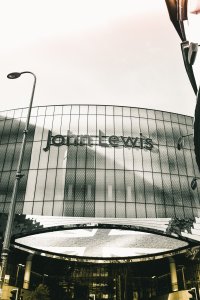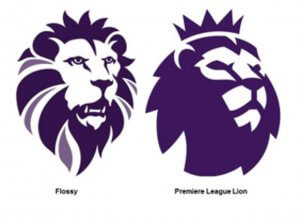- Intellectual property
- Intellectual property disputes

Shorter Reads
A Joint Effort? The Court of Appeal assesses the requirements for joint authorship in copyright works
2 minute read
Published 12 November 2019
Key information
- Specialisms
- Business
Recently the Court of Appeal handed down its Judgment in Kogan v Martin and others[1], an appeal relating to a dispute over the authorship of the screenplay of the eponymous film about the life of Florence Foster Jenkins (FFJ Screenplay), an American socialite who (erroneously) considered herself to be an excellent operatic singer. The case clarifies the position on joint authorship for copyright purposes and demonstrates the contextual approach the court adopts in assessing this question.
Martin was a professional screenwriter. Ms Kogan was a professional opera singer and Mr Martin’s ex-partner. During their relationship, Ms Kogan introduced Mr Martin to Florence Foster Jenkins’ story and claimed to have jointly authored the FFJ Screenplay with him. She therefore asserted that she was a joint owner of copyright. Mr Martin denied that Ms Kogan had done anything more than introduce him to the story that became the basis of the film.
Mr Martin applied to the Intellectual Property Enterprise Court (IPEC) for a declaration that he was the sole author and owner of the copyright in the FFJ Screenplay. In response, Ms Kogan sought a declaration that she was the joint author and copyright owner of the FFJ Screenplay.
At first instance, HHJ Hacon declared Mr Martin to be the sole owner of the copyright in the FFJ Screenplay. He dismissed much of Ms Kogan’s evidence, describing it as “vague and rambling” and held that her input had been limited to providing “useful jargon, along with helpful criticism and minor plot suggestions”.
He also held that Ms Kogan was estopped from asserting any right she might have had in the copyright against the film companies so as to interfere with the public performance of the film as she had stood by and allowed it to be produced.
Ms Kogan appealed the decision to the Court of Appeal, where Lord Justices Floyd, Henderson and Peter Jackson unanimously allowed the appeal and ordered a re-trial of the issues. They were critical of the approach of the first instance Judge and his dismissal of key evidence.
Consolidating the previous authorities on joint authorship of copyrighted works, the Court held that joint authorship required the assessment of a number of factors, which the court would have to determine in each case. In summary:
- A work of joint authorship is produced by the collaboration of those who create it. Collaboration exists where those people undertake jointly to create the work with a common design as to its general outline, and share the labour of working it out.
- Derivative works (i.e. those based on other existing works) do not qualify.
- In determining whether there is a collaboration to create a literary or artistic work it is never enough to ask “who did the writing?”.
- Joint authors must be ‘authors’ in the sense that they must have contributed a significant amount of the skill which went into the creation of the work. Contributions which do not meet this requirement do not count.
- The question of what is enough of a contribution is to be judged by whether the putative joint author has contributed elements which express their own intellectual creation by exercising free and expressive choices.
- The contribution of a putative joint author must not be distinct (otherwise each author owns the copyright in the part(s) they have created).
- There is no requirement for the authors to have intended to create a work of joint authorship.
- Whether one of the authors has the final say on what goes into the work may have some relevance to whether there is collaboration, but is not conclusive. It follows that the respective shares of joint authors are not required to be equal and can reflect, pro rata, the relative amounts of their contributions.
The Court also clarified that, in the context of copyright, screenplays are more accurately described as dramatic works as they are to be performed, as opposed to read. As such, the arrangement of the situation and plot may constitute the value in the work.
Comment
The case marks a development in the law for authors responsible for only a small part of a larger work, whose contributions may previously have been overlooked in the context of copyright. However, whilst this case helpfully clarifies the questions that a court must address when assessing whether a copyrighted work has been jointly authored, the net result in each case will be hugely dependent on its individual circumstances. We await the outcome of the re-trial with great anticipation, both on the question of joint authorship, but also (if the parties are found to be joint authors) on the question of joint ownership of the FFJ Screenplay, and what each party’s respective share should be.
[1] [2019] EWCA Civ 1645
Related content
Shorter Reads
A Joint Effort? The Court of Appeal assesses the requirements for joint authorship in copyright works
Published 12 November 2019
Associated sectors / services
Recently the Court of Appeal handed down its Judgment in Kogan v Martin and others[1], an appeal relating to a dispute over the authorship of the screenplay of the eponymous film about the life of Florence Foster Jenkins (FFJ Screenplay), an American socialite who (erroneously) considered herself to be an excellent operatic singer. The case clarifies the position on joint authorship for copyright purposes and demonstrates the contextual approach the court adopts in assessing this question.
Martin was a professional screenwriter. Ms Kogan was a professional opera singer and Mr Martin’s ex-partner. During their relationship, Ms Kogan introduced Mr Martin to Florence Foster Jenkins’ story and claimed to have jointly authored the FFJ Screenplay with him. She therefore asserted that she was a joint owner of copyright. Mr Martin denied that Ms Kogan had done anything more than introduce him to the story that became the basis of the film.
Mr Martin applied to the Intellectual Property Enterprise Court (IPEC) for a declaration that he was the sole author and owner of the copyright in the FFJ Screenplay. In response, Ms Kogan sought a declaration that she was the joint author and copyright owner of the FFJ Screenplay.
At first instance, HHJ Hacon declared Mr Martin to be the sole owner of the copyright in the FFJ Screenplay. He dismissed much of Ms Kogan’s evidence, describing it as “vague and rambling” and held that her input had been limited to providing “useful jargon, along with helpful criticism and minor plot suggestions”.
He also held that Ms Kogan was estopped from asserting any right she might have had in the copyright against the film companies so as to interfere with the public performance of the film as she had stood by and allowed it to be produced.
Ms Kogan appealed the decision to the Court of Appeal, where Lord Justices Floyd, Henderson and Peter Jackson unanimously allowed the appeal and ordered a re-trial of the issues. They were critical of the approach of the first instance Judge and his dismissal of key evidence.
Consolidating the previous authorities on joint authorship of copyrighted works, the Court held that joint authorship required the assessment of a number of factors, which the court would have to determine in each case. In summary:
- A work of joint authorship is produced by the collaboration of those who create it. Collaboration exists where those people undertake jointly to create the work with a common design as to its general outline, and share the labour of working it out.
- Derivative works (i.e. those based on other existing works) do not qualify.
- In determining whether there is a collaboration to create a literary or artistic work it is never enough to ask “who did the writing?”.
- Joint authors must be ‘authors’ in the sense that they must have contributed a significant amount of the skill which went into the creation of the work. Contributions which do not meet this requirement do not count.
- The question of what is enough of a contribution is to be judged by whether the putative joint author has contributed elements which express their own intellectual creation by exercising free and expressive choices.
- The contribution of a putative joint author must not be distinct (otherwise each author owns the copyright in the part(s) they have created).
- There is no requirement for the authors to have intended to create a work of joint authorship.
- Whether one of the authors has the final say on what goes into the work may have some relevance to whether there is collaboration, but is not conclusive. It follows that the respective shares of joint authors are not required to be equal and can reflect, pro rata, the relative amounts of their contributions.
The Court also clarified that, in the context of copyright, screenplays are more accurately described as dramatic works as they are to be performed, as opposed to read. As such, the arrangement of the situation and plot may constitute the value in the work.
Comment
The case marks a development in the law for authors responsible for only a small part of a larger work, whose contributions may previously have been overlooked in the context of copyright. However, whilst this case helpfully clarifies the questions that a court must address when assessing whether a copyrighted work has been jointly authored, the net result in each case will be hugely dependent on its individual circumstances. We await the outcome of the re-trial with great anticipation, both on the question of joint authorship, but also (if the parties are found to be joint authors) on the question of joint ownership of the FFJ Screenplay, and what each party’s respective share should be.
[1] [2019] EWCA Civ 1645
Associated sectors / services
- Intellectual property
- Intellectual property disputes
Need some more information? Make an enquiry below.
Enjoy reading our articles? why not subscribe to notifications so you’ll never miss one?
Subscribe to our articlesMessage us on WhatsApp (calling not available)
Please note that Collyer Bristow provides this service during office hours for general information and enquiries only and that no legal or other professional advice will be provided over the WhatsApp platform. Please also note that if you choose to use this platform your personal data is likely to be processed outside the UK and EEA, including in the US. Appropriate legal or other professional opinion should be taken before taking or omitting to take any action in respect of any specific problem. Collyer Bristow LLP accepts no liability for any loss or damage which may arise from reliance on information provided. All information will be deleted immediately upon completion of a conversation.
Close









































